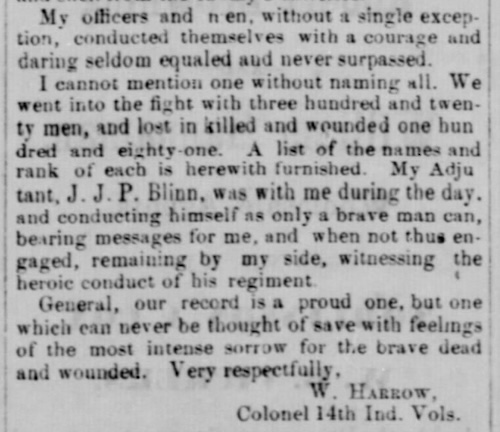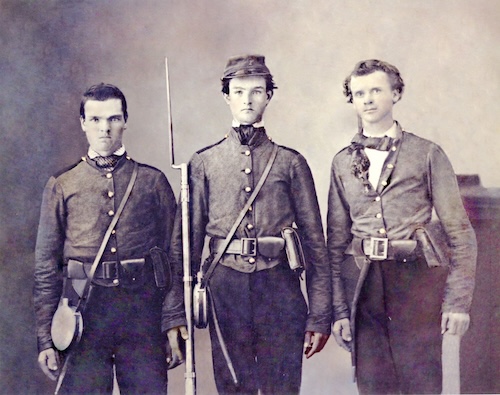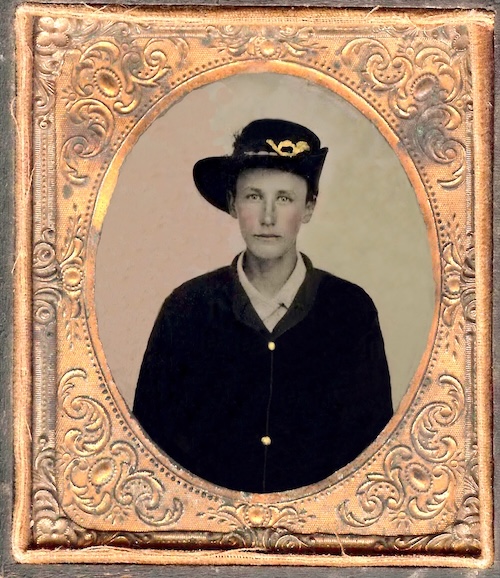McClure brothers, 24th Georgia Infantry
27 November 2025
Three McClure brothers of White County, Georgia, who served together in Company K of the 24th Georgia Infantry during the war:
James Samuel (1828-1907), at left, may have been with his company in Maryland in September 1862, but departed, sick with typhoid, in October, and spent much of the rest of the war in hospitals.
Thomas Henry (1840-1900), at the right, was probably at Sharpsburg, and was captured at Gettysburg in July 1863 and a prisoner to the end of the war.
In the middle is the youngest, Samuel D McClure (1842-1862), who was 3rd Sergeant of the company when he was killed at Sharpsburg on 17 September 1862.
Notes
This lovely photograph was contributed to Samuel’s Findagrave memorial by relatives in the Taylor family.
Some references suggest that the 4th McClure brother, Robert (1832-1923), also served in Company K, but he is not found in the Compiled Service Records for the unit or in Henderson’s Roster.
Antietam casualty lists: 14th and 27th Indiana Infantry
13 October 2025
From the Indianapolis Daily State Sentinel of 27 September 1862, a copy of Colonel William Harrow’s Antietam after-action report and lists of casualties in the battle for his 14th and the 27th Indiana Infantry regiments.

touch for the full text and lists
Notes
See the Antietam on the Web pages for the 14th Indiana and 27th Indiana Infantry regiments for links to bio sketches for each of the men on those lists. Be warned, though, that the paper did a very poor job spelling most of their names.
The newspaper was kindly shared online by the Hoosier State Chronicles: Indiana’s Digital Historic Newspaper Program from a copy in the library of Indiana University–Purdue University, Indianapolis.
William Tillotson, 14th Indiana Infantry
16 September 2025
On this day before the 163rd anniversary of the Battle of Antietam, here’s a look at the face of one of the soldiers who was there.
He’s William Tillotson, who was a 19 year old farm boy when he had this photograph taken, probably soon after he enlisted as a Private in the 14th Indiana Infantry in June 1861. The too-big hat and uniform make him seem even younger than he was, and but his gaze is direct and sober, even if a little unsure.
Young William was wounded at Antietam on 17 September 1862 by a gunshot to his leg, probably in combat at the infamous Sunken Road/Bloody Lane. He recovered to return to his unit but, sadly, was killed at Gettysburg in July 1863. He was 21 years old.
Notes
This stunning hand-tinted tintype is still in the family and was shared to his Findagrave memorial by Bill Marsh.


